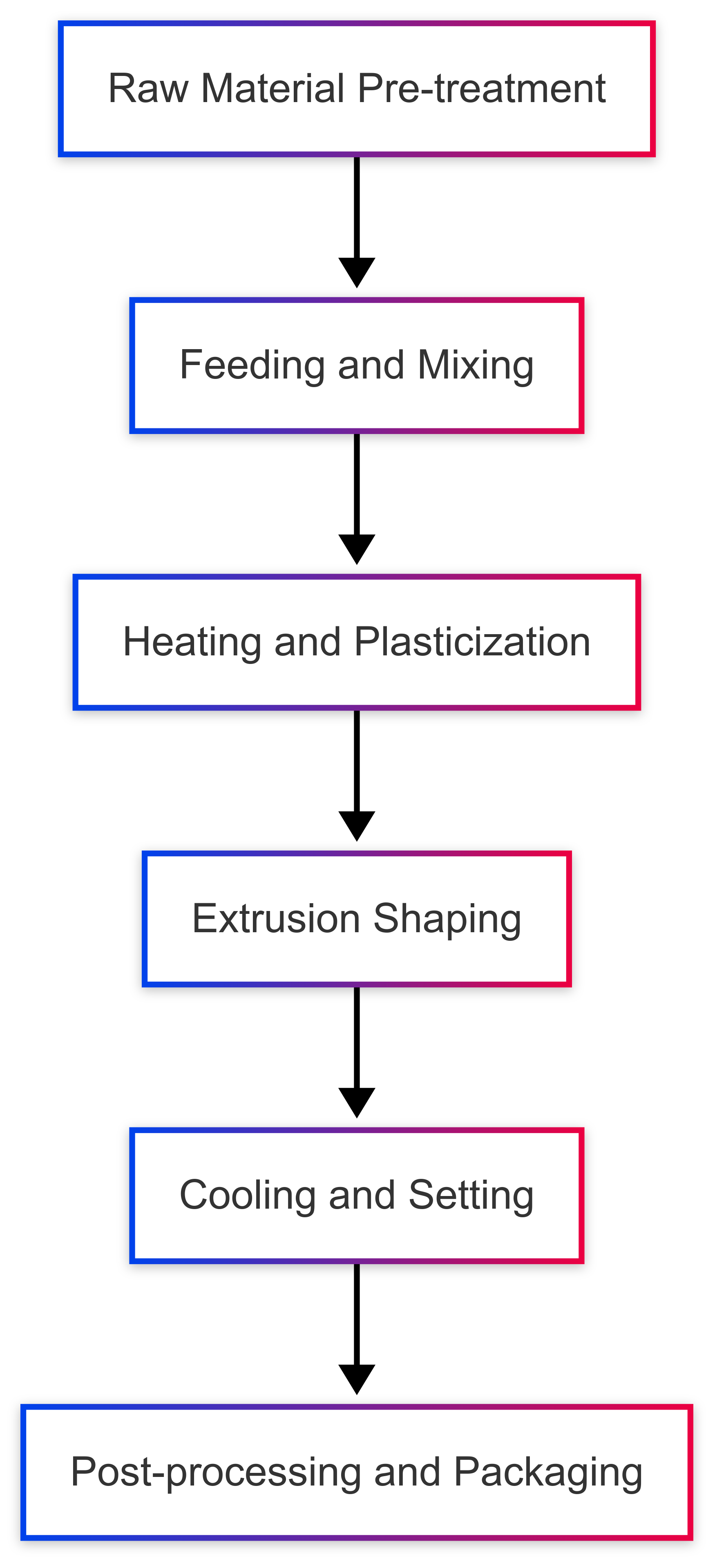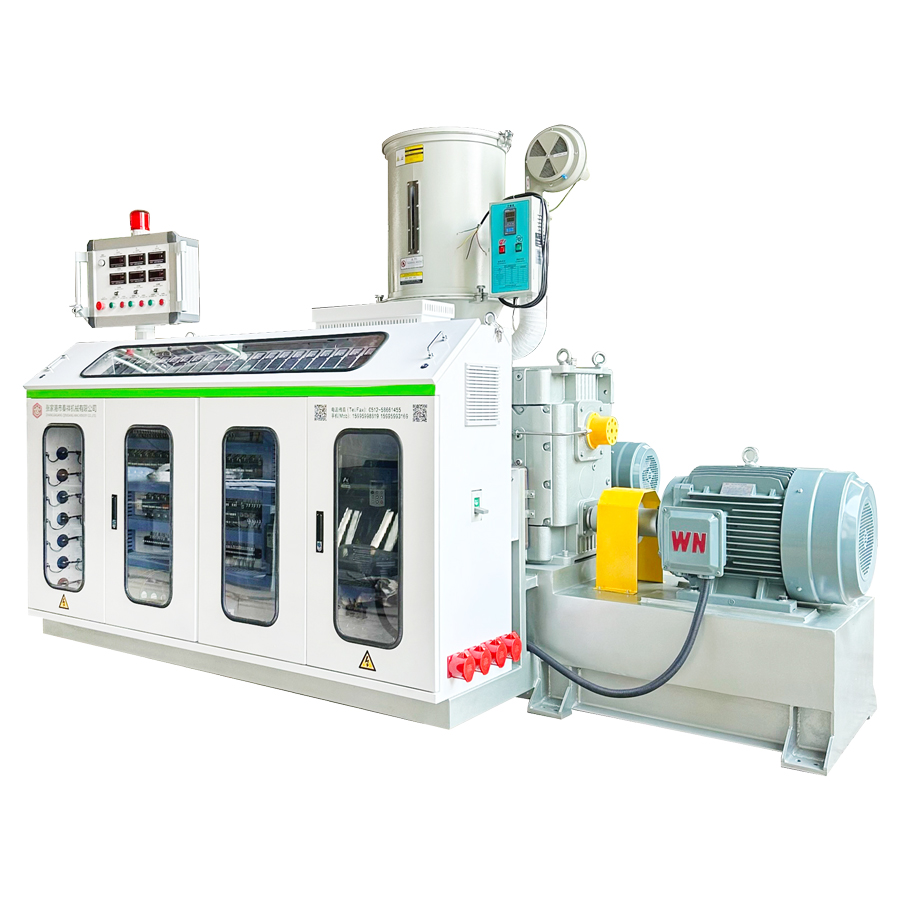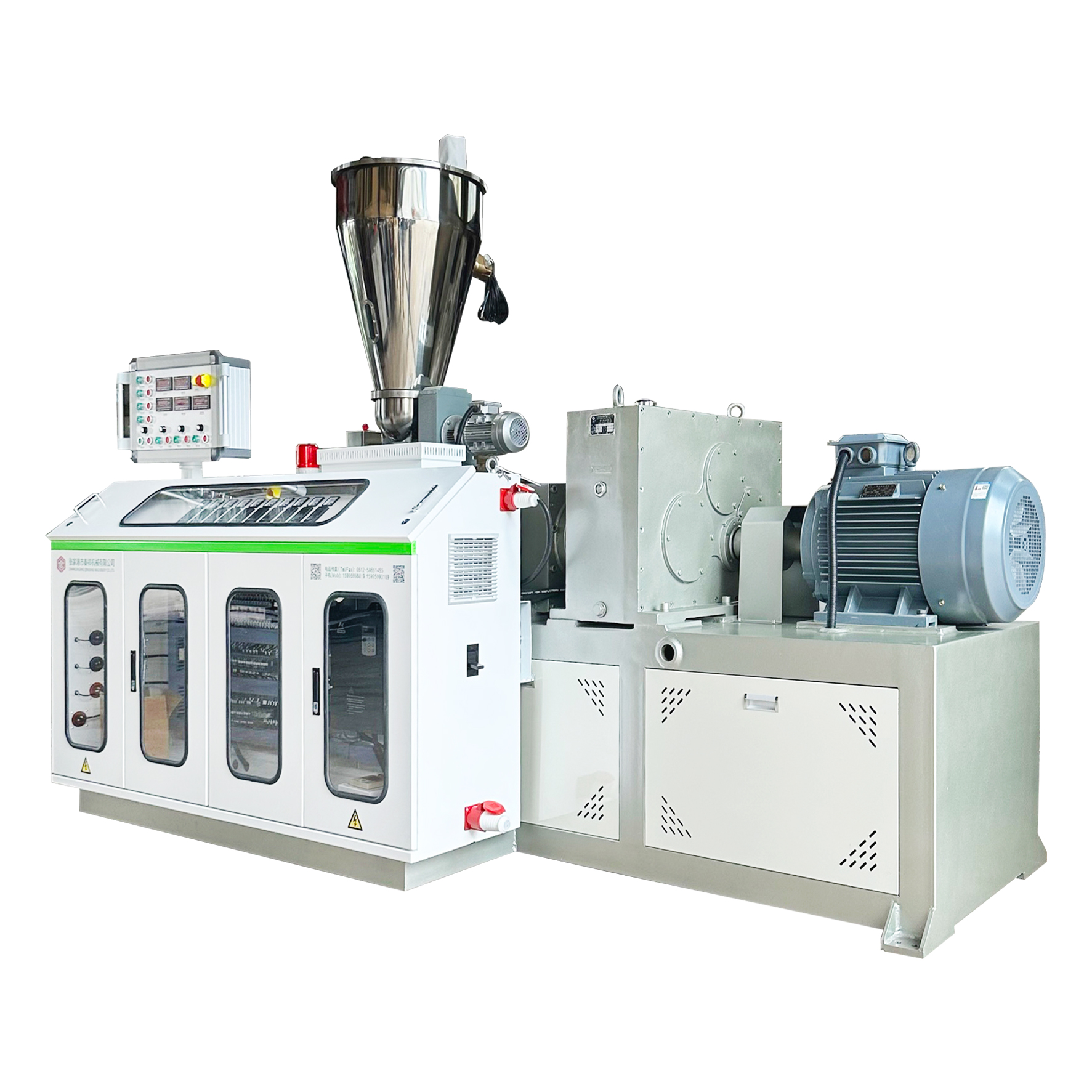1. Introduction
In today’s plastic processing industry, the plastic extruder is one of the most crucial pieces of equipment. Whether it is used in the production of pipes, films, sheets, profiles, or packaging materials, the plastic extruder plays a vital role. Understanding how a plastic extruder works not only helps optimize production processes and improve product quality but also aids companies in reducing production costs, minimizing downtime, and increasing market competitiveness.
This article will provide a detailed explanation of what a plastic extruder is, its main components, working principles, and the differences among various types of extruders. In addition, we will discuss how to choose the right extruder, troubleshoot common issues, perform maintenance, and analyze real-world case studies and future trends. Whether you are a production technician, engineer, or manager, this article offers comprehensive insights to guide your decision-making.
2. Definition and Evolution of Plastic Extruders
2.1 What is a Plastic Extruder?
A plastic extruder is a specialized machine that heats, mixes, and shapes thermoplastic raw materials into continuous profiles using a rotating screw. The basic principle is to melt the plastic by heating it and then force the molten material through a die to form products with a consistent cross-sectional shape.
2.2 Historical Development
Since the mid-20th century, plastic extrusion technology has matured and evolved with advancements in automation and control systems. Today, both single-screw and twin-screw extruders are available on the market, each with its unique advantages tailored to meet various processing needs.
3. Main Components of a Plastic Extruder
A plastic extruder is composed of several critical components, each playing an essential role in the overall operation:
Screw: Responsible for conveying, mixing, and melting the raw material.
Barrel: Houses the screw and provides the necessary heating and sealing environment.
Heating System: Includes heaters and temperature controllers to melt the plastic.
Cooling System: Typically located at the die end, used to solidify and shape the product.
Die: Determines the final shape and dimensions of the product.
Control System: Consists of PLCs or DCS systems to monitor and adjust process parameters in real time.
The following table summarizes the key components and their functions:
| Component | Function Description |
| Screw | Propels, mixes, and melts the raw material to ensure uniformity. |
| Barrel | Provides a sealed, heated environment and houses the cooling system. |
| Heating System | Controls temperature to efficiently melt the plastic without degradation. |
| Cooling System | Rapidly cools and sets the product, ensuring dimensional stability. |
| Die | Defines the product’s shape and cross-section with high precision. |
| Control System | Monitors key parameters (temperature, pressure, screw speed) to maintain stable production. |
4. Plastic Extrusion Process Flow
The operation of a plastic extruder can be divided into several key stages:
Raw Material Pre-treatment:
The raw materials (such as PE, PP, PVC) are dried, mixed, and pre-processed to ensure consistency before being fed into the extruder.
Feeding and Mixing:
The material is conveyed into the barrel by the screw, where it undergoes pre-mixing, heating, and plasticization.
Pre-mixing: Ensures uniform mixing before the material enters the heating zone.
Heating: Gradually raises the temperature to achieve a molten state.
Plasticization: The screw’s shear and compression forces ensure complete melting.
Extrusion and Shaping:
The molten plastic is forced through the die to form continuous profiles or other cross-sectional products, then enters a cooling system (water or air) for setting.
Post-Processing:
Includes cutting, grading, and packaging to meet various product applications.
The following flowchart illustrates the entire extrusion process:

5. Working Principle of a Plastic Extruder
5.1 Thermoplastic Principle
Plastic extruders exploit the thermoplastic property, where plastic becomes flowable upon heating. The key principles include:
Temperature Control: Precise control ensures the plastic reaches a molten state without degradation.
Shear Force: The rotating screw generates shear forces that further aid in melting and homogenizing the material.
Pressure Conveyance: The extruder creates high pressure to push the molten plastic through the die for shaping.
5.2 Screw Design and Mixing Efficiency
The screw is the heart of the extruder. Its design significantly impacts the mixing and melting performance. Common designs include:
Standard Screws: Suitable for most conventional plastics with simple processing.
Special Mixing Screws: Designed for enhanced mixing, particularly when adding special additives or blending different materials.
Energy-Efficient Screws: Optimized for improved heat transfer and shear, thereby reducing energy consumption.
5.3 Die and Cooling Coordination
The coordination between the die design and the cooling system is crucial for product quality:
Die Design: The geometry of the die determines the final shape and appearance. High-precision dies result in stable product quality.
Cooling Technology: Zoned water cooling or air cooling systems quickly solidify the extruded product to maintain its dimensional stability.
6. Comparison of Different Types of Plastic Extruders
The market mainly offers two types of plastic extruders: single-screw and twin-screw extruders. Each type has its advantages and disadvantages.
6.1 Single-Screw Extruders

Advantages:
Simple structure, easy to operate and maintain.
Suitable for most conventional thermoplastics.
Lower investment and operating costs.
Disadvantages:
6.2 Twin-Screw Extruders

Advantages:
Superior mixing performance, ideal for multi-component blending.
Capable of processing high-viscosity materials efficiently.
Generally lower energy consumption with better material dispersion.
Disadvantages:
The following table provides a detailed comparison:
| Type | Advantages | Disadvantages | Application Areas |
| Single-Screw Extruder | Simple structure, low cost, easy maintenance | Moderate mixing, higher energy usage | Conventional thermoplastics, low-fill materials |
| Twin-Screw Extruder | Excellent mixing, ideal for high-viscosity/multi-component materials | Higher cost, complex operation | High-viscosity materials, compounding applications |
7. Considerations When Choosing a Plastic Extruder
When selecting the right plastic extruder for your production needs, consider the following factors:
Production Capacity and Throughput:
Raw Material Characteristics:
Type of plastic (PE, PP, PVC, etc.), melt index, and filler content.
Energy Efficiency and Environmental Impact:
Ease of Operation and Maintenance:
Investment Budget and ROI:
Brand Reputation and Service Quality:
A careful evaluation of these factors ensures that you choose the plastic extruder that best fits your production process and market demands.
8. Common Issues and Maintenance Tips
8.1 Common Problems
Material Blockage:
Often caused by high moisture content, improper temperature settings, or worn screw surfaces.
Temperature Instability:
May result from faulty heaters or inaccurate temperature sensors.
Excessive Vibration and Noise:
Could be due to loose installation or worn-out internal components.
Surface Defects in the Product:
May result from die design flaws or uneven cooling.
8.2 Maintenance Recommendations
Regular Servicing:
Follow the manufacturer’s guidelines for periodic cleaning and replacement of screws, barrels, dies, and drive components.
Monitor Temperature and Pressure:
Use online sensors for real-time monitoring and adjust process parameters promptly.
Operator Training:
Invest in comprehensive training programs to ensure that operators understand proper equipment handling and troubleshooting.
Keep Spare Parts in Stock:
Maintain an inventory of critical spare parts to minimize downtime in the event of equipment failure.
9. Case Studies and Practical Applications
9.1 Case Study: Successful Implementation in Pipe Manufacturing
Background:
A manufacturer producing PE pipes experienced issues with surface ripples and dimensional instability due to uneven mixing and temperature fluctuations in their single-screw extruder.
Actions Taken:
Adjusted the temperature distribution in the heating zones.
Upgraded to a twin-screw extruder with enhanced mixing capabilities.
Improved the cooling system to achieve zoned temperature control.
Outcome:
Product quality improved significantly, with a smoother surface and more consistent dimensions. Production efficiency increased by over 20%, and customer satisfaction was notably enhanced.
9.2 Practical Application Scenarios
Plastic extruders are widely used in various fields, including:
Pipe Production: Manufacturing PE, PVC, and PP pipes for construction and water supply.
Film Production: Producing packaging films and stretch films with high clarity and uniform thickness.
Profile and Sheet Extrusion: Used in producing window profiles, automotive parts, and industrial components.
Food Packaging: Meeting high hygiene standards with precise temperature and mixing control.
10. Future Trends and Technological Innovations
The future of plastic extrusion is being shaped by advancements in automation and sustainable manufacturing. Key trends include:
Smart Monitoring Systems:
Integration of IoT and big data analytics to enable real-time process monitoring and automatic adjustments, leading to improved product quality and energy efficiency.
Green and Energy-Efficient Technologies:
Development of high-efficiency heating and cooling systems, optimized screw designs, and waste reduction measures to meet strict environmental standards.
Modular and Customizable Solutions:
The trend toward modular design enables rapid reconfiguration of production lines to accommodate multi-product manufacturing, facilitating small batch, high-mix production.
Material Innovations and Process Optimization:
With the emergence of new plastic materials, extruder technology must adapt with enhanced control systems and finer process optimization to achieve superior product performance.
11. Conclusion
In summary, a plastic extruder is a vital machine in the plastics processing industry that transforms raw thermoplastic materials into continuous products through heating, mixing, and extrusion. By understanding its components, operational flow, and working principles, manufacturers can optimize production processes, improve product quality, and reduce energy consumption and downtime. As technology evolves—with smart monitoring, energy efficiency, and modular customization—the future of plastic extrusion holds promising opportunities for increased efficiency and innovation.
This comprehensive guide has detailed the inner workings, maintenance, and troubleshooting of plastic extruders. By applying these insights, companies can make informed decisions on equipment selection, process improvement, and long-term strategic planning, thereby enhancing their market competitiveness and achieving sustainable production success.



























